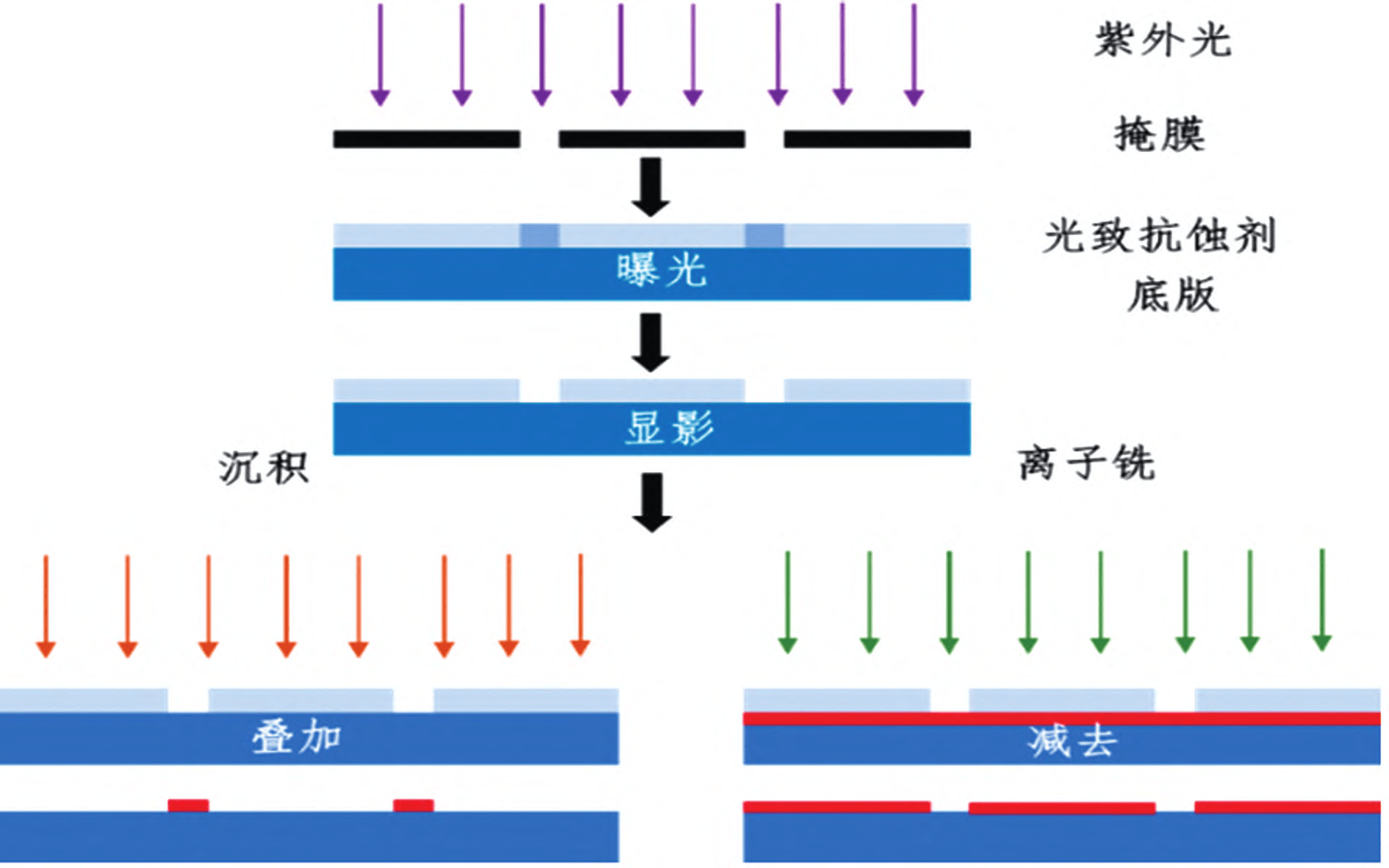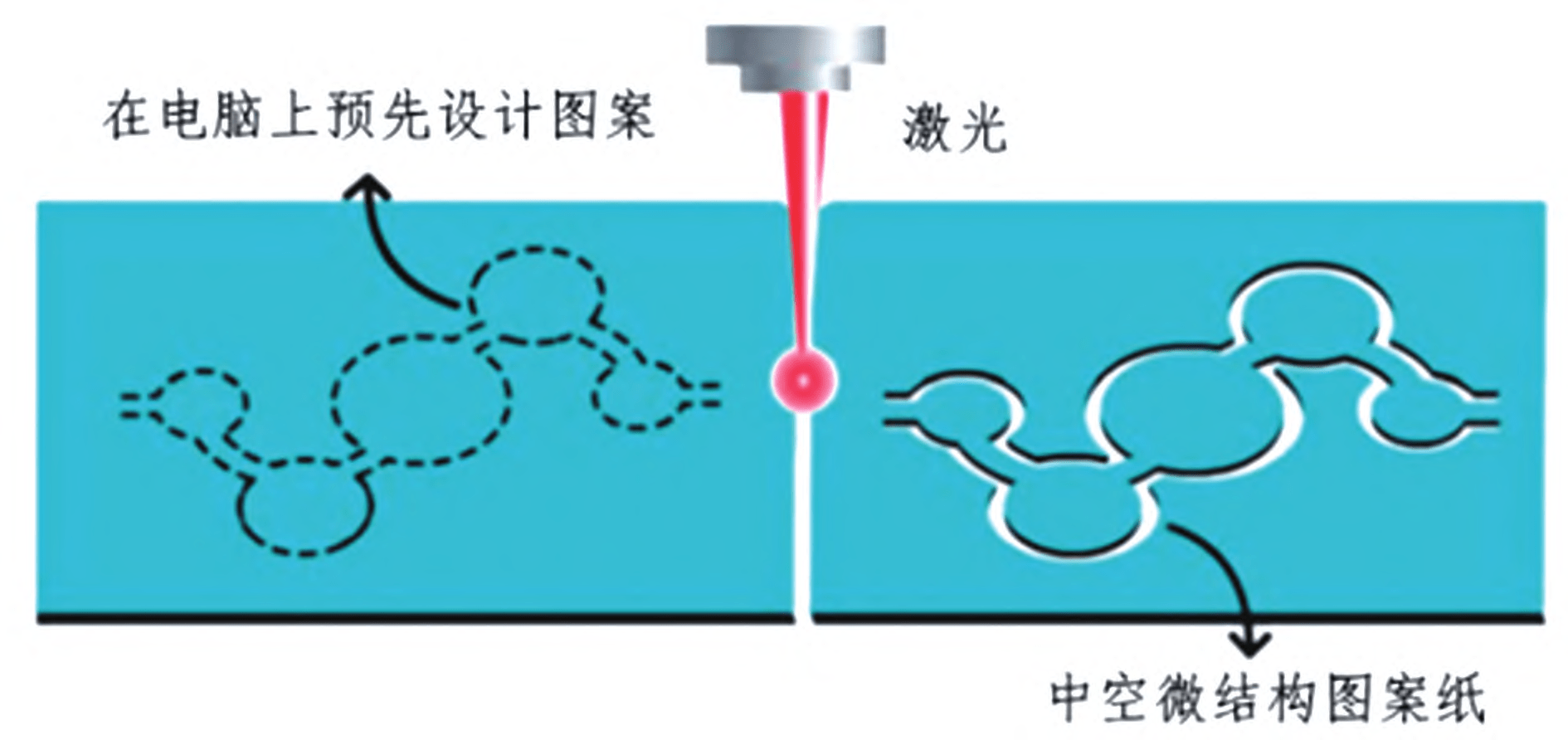Paper chips are fabricated by creating hydrophobic barriers on paper through chemical modification of the paper surface, physical deposition of hydrophobic reagents, and physical cutting to construct patterned hydrophilic channels. The fabrication methods include UV photolithography, wax printing, plasma treatment technology, etching, inkjet printing, printing, mapping and cutting.
ultraviolet lithography
UV lithography is a method that realizes the fabrication of microstructures by irradiating photoresist with ultraviolet light. The mask plate is masked and pretreated to form a chemical cross-linking in a specific exposure area through a photochemical reaction. The unexposed portion is removed by steps such as developing and cleaning, while the exposed portion forms a template for fabricating microstructure channels.

UV lithography, the earliest method used to fabricate paper chips, is able to precisely control the hydrophilic and hydrophobic channels that form patterns on the paper substrate with a certain degree of stability.
However, the photoresist used in the fabrication process is expensive and needs to be carried out in a clean laboratory with high environmental requirements. In addition, the fabricated paper chips have poor toughness and are not easy to fold, and these factors limit their promotion in practical applications.
process of printing with wax
The wax printing method is used to build microchannels by printing paraffin wax onto a paper substrate according to a designed pattern, and then heating it so that the paraffin wax melts and penetrates into the paper, forming a hydrophobic layer.
Channels made by wax printing are capable of working in aqueous solutions, including acids, bases, buffers, and glycerol, but wax is incompatible with most organic solvents. In addition, due to the low surface energy of the hydrophobic layer, the nature of the wax may cause certain biological solutions with low surface tension to flow through the hydrophobic barrier.
In addition, the relatively low resolution of patterns produced by wax printing needs to be combined with high-precision manufacturing equipment, such as wax jet printers or 3D printers, in order to improve the resolution and precision of wax printing patterns to meet the needs of more microscopic biochemical testing.
Plasma Processing Technology
Plasma treatment is a commonly used material surface treatment technology that utilizes a plasma of non-polymerizing gases to process the surface of a material.
Properties such as surface hydrophilicity, adhesion, and biocompatibility can be improved by introducing new chemical groups on the surface of the material or changing the structure of the polymer chain.
The use of plasma treatment during paper chip preparation can enhance the biocompatibility of paper chips and improve the sensitivity and reproducibility of their detection. However, the operation requires precise control of the treatment time, gas flow rate and gas concentration to avoid over-treatment or gas leakage, which can lead to the creation of unwanted hydrophilic or hydrophobic regions.
etching
Etching is the microfabrication of the surface of a paper substrate by chemical reaction or physical means using a liquid etchant or laser to build microfluidic channels. However, the limitations of wet etching are that it is slow and consumes large amounts of chemicals.
In order to accelerate the etching speed, an electrolytic device can be added to the wet etching. On the other hand, laser etching offers significant improvements in speed and accuracy, but it requires expensive equipment and higher technical requirements compared to wet etching.

inkjet printing
Inkjet printing is similar to the wax printing method, but inkjet printing is controlled by a nozzle that jets hydrophobic ink to form various patterns or channels. When the hydrophobic ink is sprayed onto the paper, it dries and fixes quickly and is not easily blurred, resulting in the rapid formation of hydrophilic and hydrophobic channels.
Inkjet printing can utilize specific inks or organic solvents to construct microfluidic channels. In addition, by spraying different reagents in layers through an inkjet printer, complex channel structures can be formed, avoiding thermal runaway and accuracy problems. Meanwhile, inkjet printing has the advantages of high flexibility and customizability.
printing method
Flexographic printing transfers ink to the paper substrate through anilox rollers to form a clear hydrophobic pattern. This method requires the use of a specialized flexo plate to make the printed pattern, and requires a high degree of smoothness in the printed paper, otherwise the print quality will be affected.
Screen printing involves making a screen of the design to be printed, then applying ink to the screen, and printing the ink onto the paper by placing the paper on the screen and applying pressure.
Complex paper chip structures can be constructed gradually through the process of repeated printing and drying. Screen printing has the advantages of low cost and wide applicability, and is suitable for simple and mass production.
However, screen printing is not suitable for fine and complex patterns and requires the design of a corresponding screen template for each different pattern, limiting its flexibility.
draughtsmanship
Plotting methods include both manual hand plotting and plotter plotting.
Manual hand drawing is used to create paper chips by copying or drawing the desired pattern on filter paper using oil-based markers or crayons, thus creating hydrophilic and hydrophobic channels.
The method is convenient, low-cost, and does not require expensive instruments or specialized personnel, as well as high flexibility and creativity to design the paper chip structure according to the demand. However, the limitation of manual hand drawing is that it is difficult to ensure the consistency and resolution of the paper chip by relying only on manual operation, which is prone to errors and non-repeatability problems.
Plotter plotting is the use of a computer program to control a plotter that draws a designed pattern on selected areas of the filter paper, allowing the hydrophobic reagent to air-dry and form a hydrophobic barrier. The automated plotting method can quickly and accurately realize the chip design on the filter paper and produce a paper chip that meets the requirements.
Compared to traditional manual plotting, automated plotting methods can not only improve fabrication efficiency, but also ensure the accuracy and consistency of chips. However, using a plotter to produce paper chips requires expensive equipment and basic computer operation skills.
cut
Paper chips can also be made using either hand-cut or cutter-cut methods.
Hand-cutting is a traditional and basic method of paper chip preparation, in which the paper substrate is cut to construct the desired microchannel structure by using tools such as scissors or carving knives.
The method is simple, low-cost and suitable for preparing paper chips with relatively simple patterns. However, it is difficult to ensure the accuracy and repeatability of cutting due to human factors and experimental operations, which can easily lead to errors and non-repeatability problems.

Laser cutting uses a high energy density laser beam focused on the surface of a material to melt, vaporize or decompose it and move the laser beam along a patterned trajectory to achieve cutting.
Laser cutting technology improves the efficiency of paper chip production, with the advantages of high precision, high surface finish and the ability to realize complex shape cutting. For the production of micro paper chips, you can choose a small carbon dioxide laser cutting machine, this type of equipment compared to large laser cutting machine cost is cheaper.
About Us
DingXu (Suzhou) Microfluidics Technology Co., Ltd. is a high-tech enterprise dedicated to the field of microfluidics. We are committed to providing customers with comprehensive microfluidic solutions, including customized microfluidic chip development, surface modification, microfluidic chip processing equipment, and microfluidic instruments. Our team boasts extensive experience and technical expertise, continuously combining professional knowledge with innovative thinking to deliver high-quality solutions. We consistently prioritize customer-centric values, embrace self-challenges, and pursue excellence. Through professionalism, innovation, and collaboration, we aim to create greater value for our customers and contribute to a brighter future in the field of microfluidics.
© 2025. All Rights Reserved. 苏ICP备2022036544号-1















